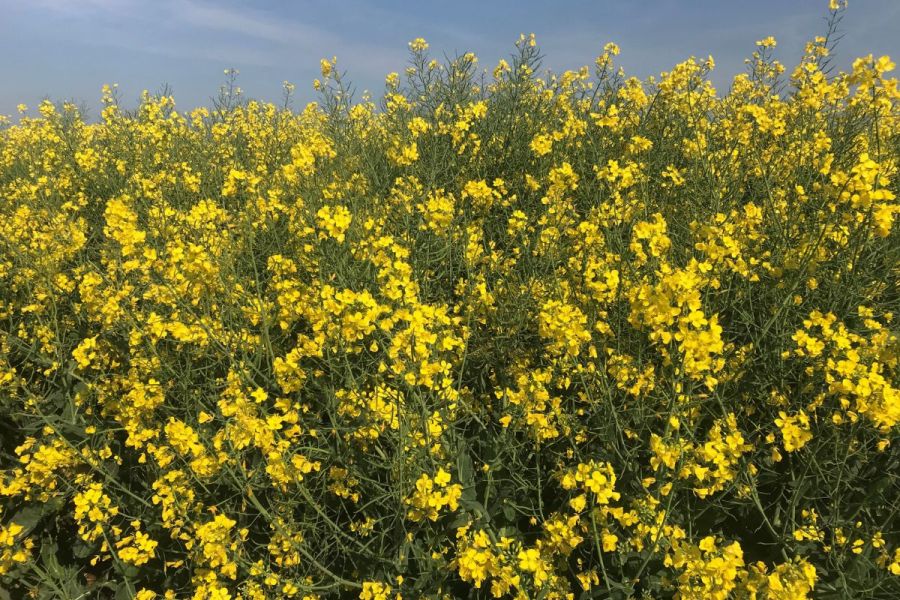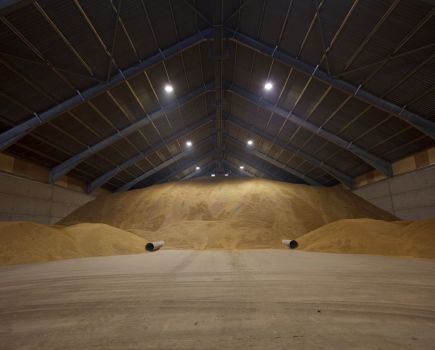Should growers still consider conventional oilseed rape varieties when the majority of options on the market are hybrid and wider risks associated with the crop remain high? CPM investigates.
“New conventional, open-pollinated varieties offer high yields and display similar levels of vigour to hybrids.”
By Janine Adamson
While there appears to be a steady wave of conventional oilseed rape varieties entering the market, the majority of options available to growers continue to be hybrid. So where do conventional OSR varieties fit and what are the reasons for selecting them?
According to Grainseed’s Neil Groom, the battle continues based on the myth that hybrids are more vigorous than conventionals. “This isn’t what we see in trials or in the field,” he stresses.
“Vigour is a feature of the individual variety, not whether it’s conventional or hybrid. Whereas some hybrids show more vigour, certain conventionals are very vigorous too.”
A recent new launch is Pi Pinnacle from Grainseed which entered the AHDB’s Recommended List last winter as the top performing conventional OSR for both gross output and treated yields.
“In AHDB RL trials last year it yielded 103% gross output in the East and West region (with 104% treated yield) and 101% in the North (with 102% treated yield), taking the number one spot for conventional varieties in both regions,” says Neil.
He adds that Pinnacle is not only the number one conventional variety, but is also one that’s been bred in the UK by independent plant breeder, Mike Pickford, who’s been focusing on the conventional OSR market for more than half a century.
Using a classical ‘pedigree’ method where single plants are selected in successive generations and a record is maintained of the parent-progeny relationships, Mike has successfully bred 18 varieties to date.
He says he specialises in conventional varieties which are ideally suited to UK conditions, all of which are initially developed from his home in the Cotswolds. “My breeding philosophy is simple – to improve individual yield components such as increasing the size of the seed – it’s all about yield.
“For this, I select plant types which exhibit a high harvest index, which means a high ratio of seed yield to total plant biomass. This involves analysing components such as pods per plant, seeds per pod and the size of the seed,” explains Mike.
“Using this method, Pinnacle stood out because it has a high harvest index with above average scores for all components, including a thousand grain weight between 6.5-7g.”
Mike also strives to maintain clean green stems which he says allows more efficient photosynthesis during the ripening grain filling process.
Again, this is a characteristic which Pinnacle exhibits. “Furthermore, it’s ripens medium to early which ensures the OSR harvest is completed before first wheats are ready to be cut so following crops can be planted in good time,” comments Mike. “And it’s a consistent performer, year on year.”
Pinnacle also scores well in terms of light leaf spot (7) and has good verticillium resistance [7]. But one stand-out advantage of conventional varieties over hybrids can be a reduction in seed cost, says Neil.
Neil explains a ‘good hybrid’ can cost around £250 per 1.5M seeds/3ha bag. At £145 per 2M seed bag for Pi Pinnacle, growers can purchase 1.7 bags [to spend the same £250]. “Sown at a rate of 80 seeds/m2, this equates to 4.25ha of seed, so you can drill more than an extra hectare for the same spend,” adds Neil.
This is an important factor when external aspects such as cabbage stem flea beetle or pigeon damage are at play, he says. “If pest pressure is too great or the weather isn’t favourable, you can pull it up, plant a different crop and the losses are minimised.
“And of course, for those who farm-save seed, current legislation excludes hybrid OSR varieties meaning only conventional varieties are approved. Farm-saved seed is estimated to account for 50% of sowings which isn’t insignificant,” points out Neil.
Elsoms Seeds is also advising growers and agronomists to reconsider conventional OSR varieties based on their targeted traits, agronomic merit scores and shorter breeding cycles.
OSR breeder Mark Nightingale has worked with the crop for more than 20 years and says although there’s been a rise in the popularity of hybrids based on their reputation for enhanced vigour, new options could tip the balance back in the favour of conventionals.
“New conventional, open-pollinated (OP) varieties offer high yields and display similar levels of vigour to hybrids. Although OSR prices are currently lower than in recent years, we still annually import 1.5M tonnes of oilseeds into the UK, so market demand is strong.
“It’s worth noting that we can breed new conventional varieties far faster than hybrids, so the cost of conventional seed is often much lower which can make a significant difference when it comes to lowering upfront costs and mitigating risk when establishing the crop,” he explains.
Mark stresses that despite other strong and well-established economic and agronomic arguments for conventional varieties, there’s little doubt they’ve been overlooked when it comes to OSR variety selection.
“Currently, no one’s bred a variety that’s resistant to CSFB and the current trend towards early establishment has prompted growers to become overly reliant on over-yeared seed which tends to be less vigorous, regardless of whether it’s a conventional or a hybrid variety.
“To combat the threat of CSFB, Elsoms is selectively breeding new varieties which can cope with higher larval loads. And, because breeding cycles for conventional OP varieties are much shorter than for hybrids, we’ve found that OP varieties can adapt to this selection pressure much quicker than when breeding hybrids,” he continues.
“This recent breakthrough is just one element of a wider risk mitigation strategy for growing OSR more successfully.”
Elsoms’ new conventional varieties are Powerhouse, Firebird and Hallmark, all of which are currently in AHDB candidate trials. “Powerhouse has exceptionally high seed yields, Firebird combines a high gross output with built-in Turnip Yellows Virus (TuYv) resistance, whereas Hallmark offers diversity in genetics with very high oil content and excellent verticillium resistance,” says Mark.
So despite these benefits, what’s steering growers towards hybrids? Is really down to the promise of vigour? Ted Williams, arable seed product manager at Agrovista, believes the move towards hybrid OSR has been due to a number of factors. “It’s easier to stack genetic traits in a hybrid such as clubroot resistance, pod shatter and of course the development of Clearfield varieties.
“With pod shatter resistance, this can add an extra 7-10 days flexibility at harvest which is useful in catchy conditions,” he says. “And now, the stacked traits found in new hybrid varieties come with less, if any, yield lag. It’s understandable why they’ve become popular.”
However, Ted doesn’t dispute that there remains a place for conventional OSR varieties. “It’s becoming increasingly difficult to establish a crop of OSR but with conventionals, you plant up to twice as much seed than you do with a hybrid. With more seed there’s a greater likelihood of the crop establishing and beating autumn pest pressures – essentially, it’s a numbers game.”
To encourage growers to keep OSR in rotations as a valuable break crop option, Ted says Agrovista launched Codex – a conventional variety which comes with a risk-share scheme. “Codex is sold without royalties at the time of seed purchase, with the fee collected at a later date based on the surviving crop.
“As a variety, it has good autumn and spring vigour not dissimilar to Campus (KWS). It has the maximum score for stem canker resistance (9) with a high resistance to lodging (8) so proves to be a solid variety with robust agronomic features,” he continues.
“Although the rest of Agrovista’s OSR are mostly hybrid varieties, Codex is a valid alternative for those looking for a conventional variety which establishes quickly,” concludes Ted.
This article was taken from the latest issue of CPM. For more articles like this, subscribe here.
Sign up for Crop Production Magazine’s FREE e-newsletter here.




